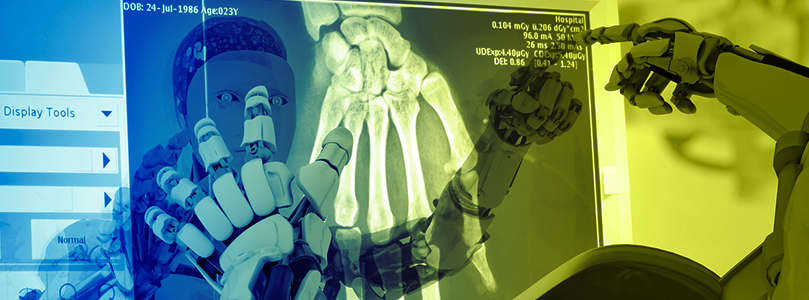Why Automation and Robotics are Changing the Medical Industry

Automation and robotics have never been more crucial in manufacturing. Essentially, they offer the ability to minimize or remove human operators from production environments. The advantages this provides are plentiful, even without a global lockdown. To say that MedTech benefits more than any other industry is not far-fetched.
Reliability in your Device
Automation ensures every test procedure, sequence and step is followed to a tee for every device. It is physically impossible for two human operators, no matter how well trained, to provide the same quality of results. Performing the same task over and over is redundant and cannot be done the same way 100% of the time. Automation provides repeatability, reduces variability and can achieve both precision and speed that simply can’t be done by a human alone. Automated vision inspection, for example, can detect the tiniest flaw in microseconds. For a person to perform the same task, a lot of time is wasted focusing and re-focusing a microscope. Automation easily sorts out defective products, and therefore simplifies meeting compliance requirements.
Protecting the Most Valuable Asset
This asset, of course, being employees. By minimizing or removing operators and engineers from the manufacturing floor, several benefits are achieved simultaneously. First, by programming a robot to perform tedious lifecycle tasks, a person can be put to much better use. Jobs like repeated button-pushing, knob-turning, screen-reading or other kinds of verification will send even the most patient operator running for the hills. Plus, by removing people from the shop floor, their health and safety are exposed to far fewer risks. Workplace accidents are much more manageable if no one gets hurt.
Keeping Up with Demand
Given the enormous amount of R&D and technological innovation we are seeing in MedTech, how do you keep up? It is unlikely that there will be enough skilled engineers, technicians, and leaders to handle all the opportunities coming in, not to mention performing at the speed and quality the industry requires. Robotics will easily save the day by being integrated into every aspect of production: from automated assembly and handling to automated testing and inspection. Sadly, we have witnessed the consequences of a medical device shortage when this equipment is needed. There is no reason for this to happen again.
Good Economic Sense
As robotics-driven production becomes more economical, some business activities that were previously done offshore due to lower labor costs will be brought back to a company’s home base. North America & Europe are benefitting from this phenomenon, called “onshoring” or “nearshoring”. For many companies, having production and R&D in closer proximity reduces communication errors and solves the challenge of shorter product lifecycles. Additionally, logistics and overall supply chain become simplified with fewer borders to consider, particularly with an automated data management system as well.
At the End of Day, There’s Still a Pandemic to Deal With
We cannot get to a point where medical equipment is not available. We have been there, and it costs lives. At the same time, if the world goes into lockdown and businesses shut down, continuing to put frontline workers at risk is unnecessary. Smart factories minimize the need to send people out when everyone should be staying in. By accessing machinery and data remotely, better decisions can be made safely and confidently.
Proper preparation for the future is achieved through automation and robotics. No one can predict what will come next, but smarter manufacturing will protect your business, your investment and above all, your people.
To speak with a test & quality expert please contact Averna.
You may also be interested in…
Did you miss our webinar? Find out directly from our experts why automated vision inspection is growing throughout medical manufacturing.
Get in touch with our experts or navigate through our resource center.
